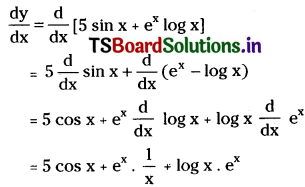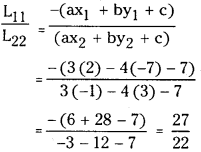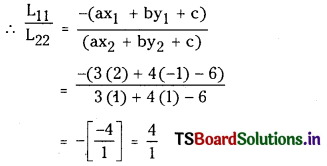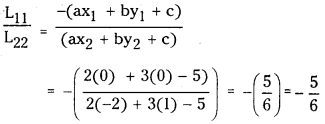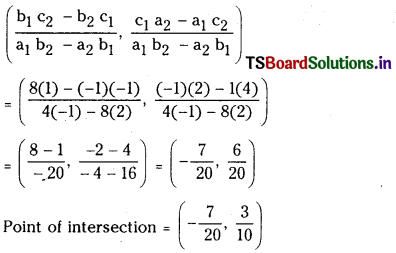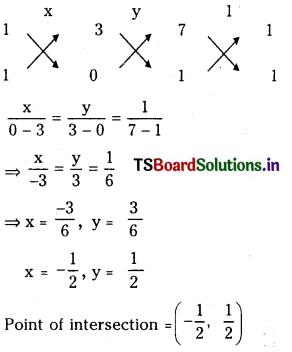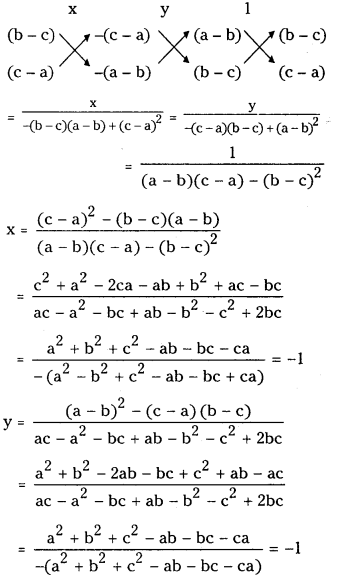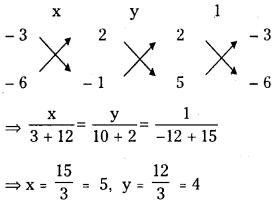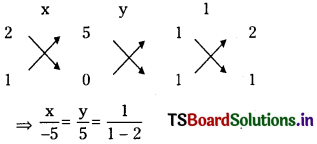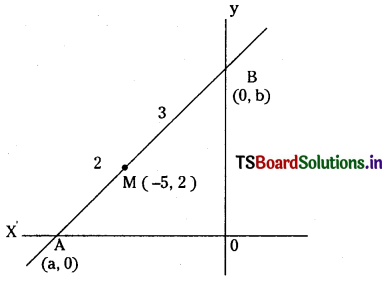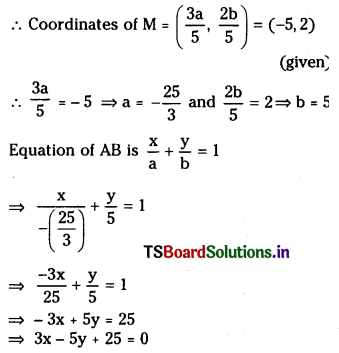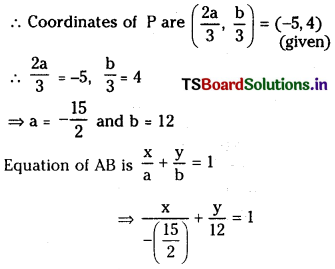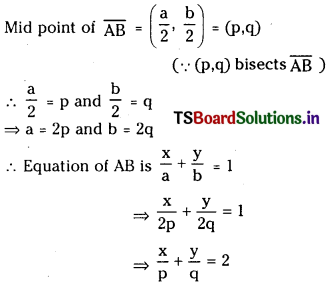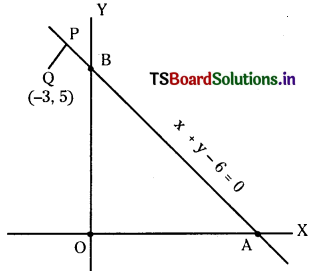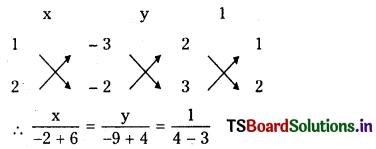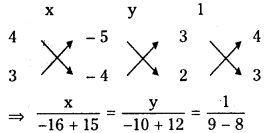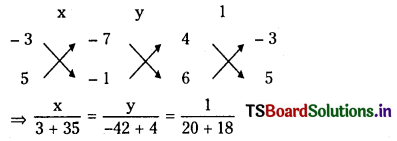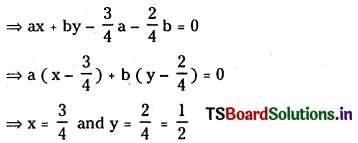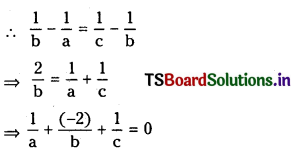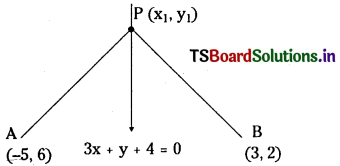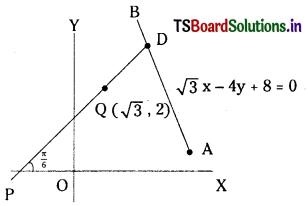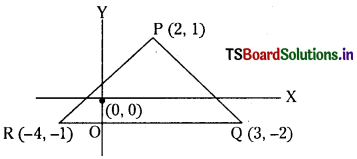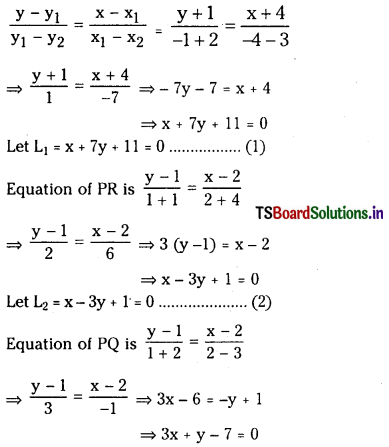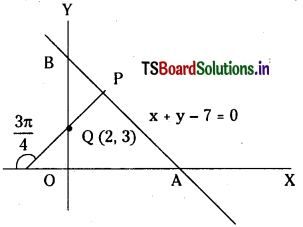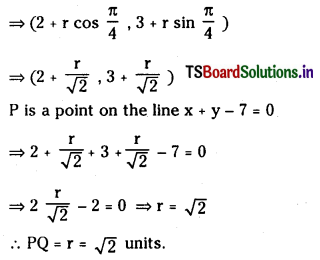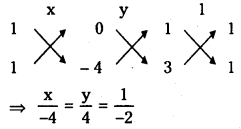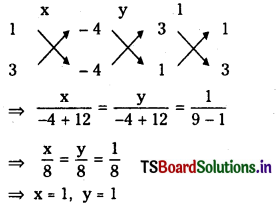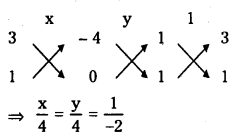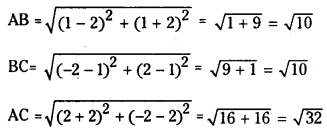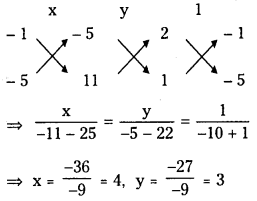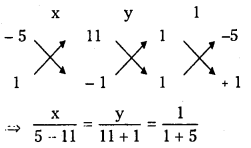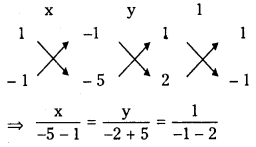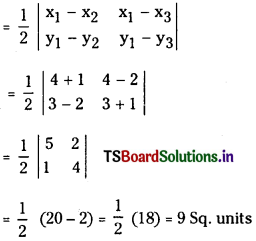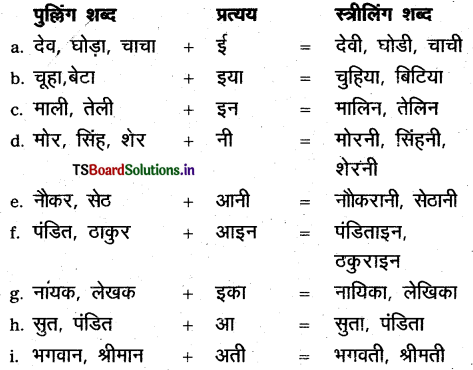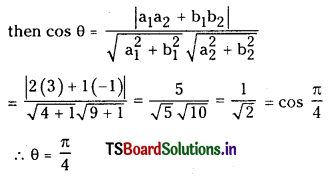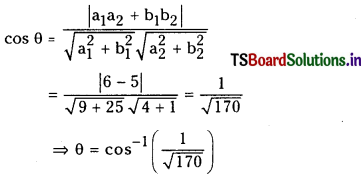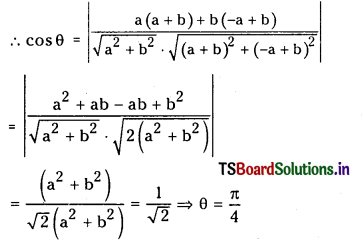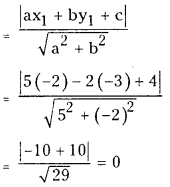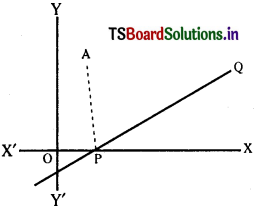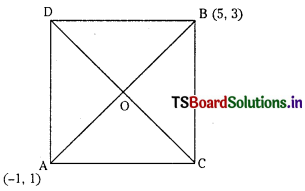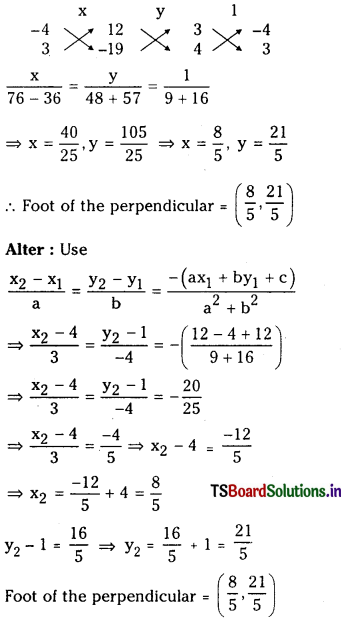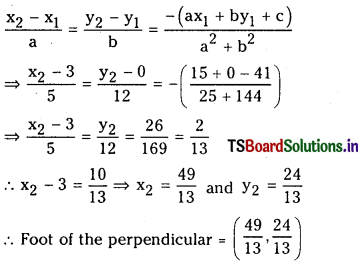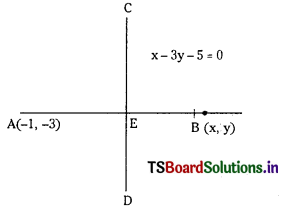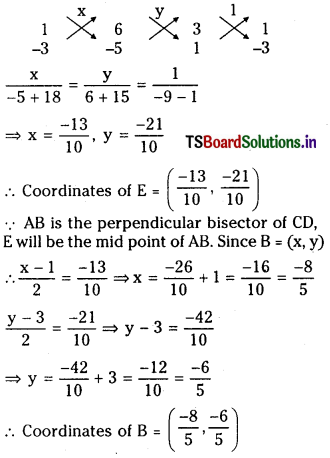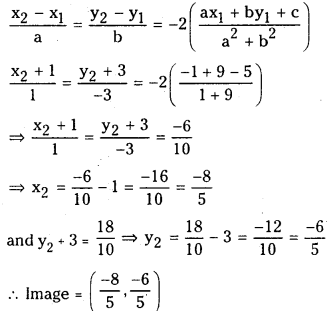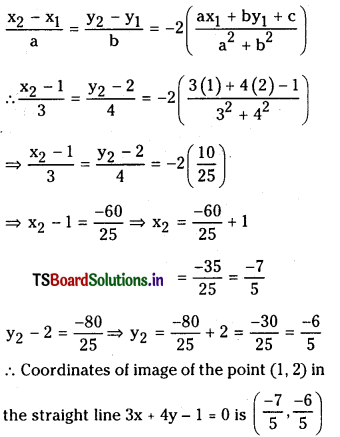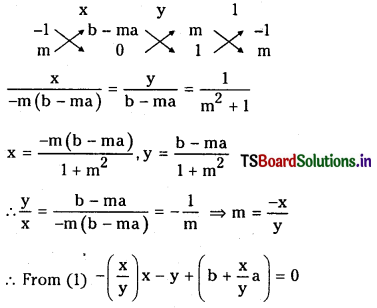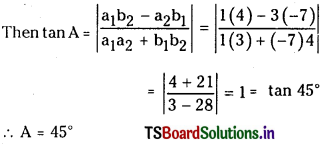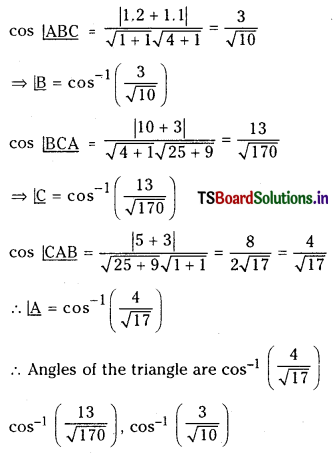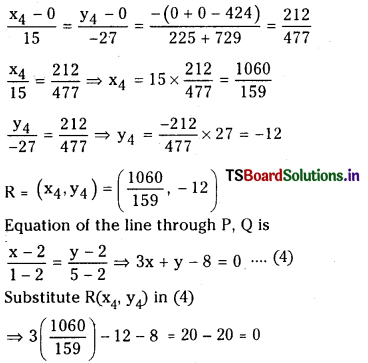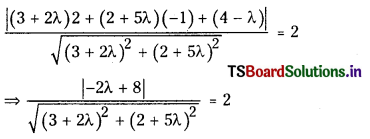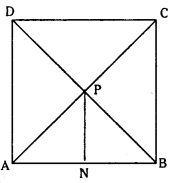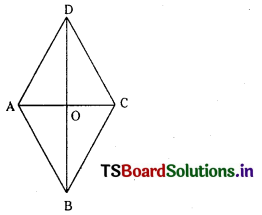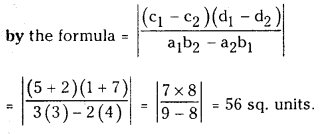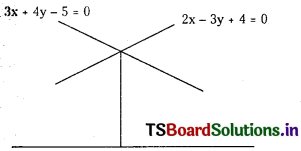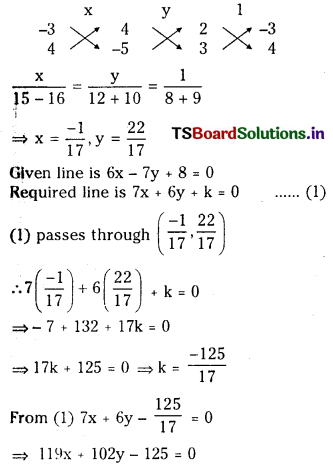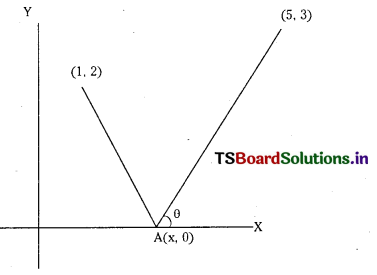Students must practice these Maths 1B Important Questions TS Inter 1st Year Maths 1B Differentiation Important Questions Very Short Answer Type to help strengthen their preparations for exams.
TS Inter 1st Year Maths 1B Differentiation Important Questions Very Short Answer Type
Question 1.
Find the derivative of f(x) = ex (x2 + 1). [May ’02]
Solution:
Given f(x) = ex (x2 + 1)
Let y = ex (x2 + 1)
Differentiating with respect to x on both sides
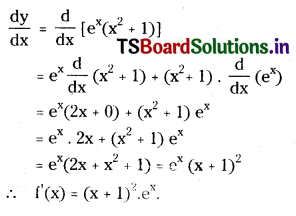
Question 2.
If f(x) = x2 . 2x . log x (x > 0), find f'(x). [May ’10]
Solution:
Given f(x) = x2 . 2x . log x
Let y = x2 . 2x . log x
Differentiating with respect to x on both sides
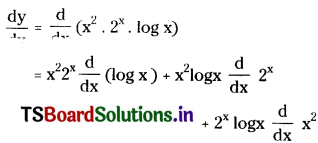
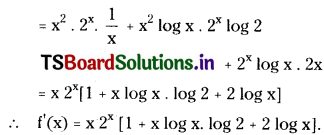
![]()
Question 3.
If f(x) = \(7^{x^3+3 x}\) (x > 0), then find f'(x). [Mar. ’17 (TS); May ’05]
Solution:
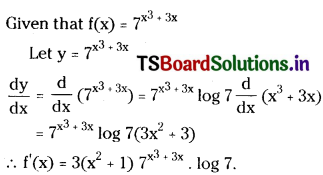
Question 4.
If y = e2x log(3x + 4) then find \(\frac{d y}{d x}\). [May ’13; Mar. ’13 (Old)]
Solution:
Given, f(x) = e2x log(3x + 4)
Let y = e2x log(3x + 4)
Differentiating on both sides with respect to x
\(\frac{d y}{d x}=\frac{d}{d x}\left[e^{2 x} \log (3 x+4)\right]\)
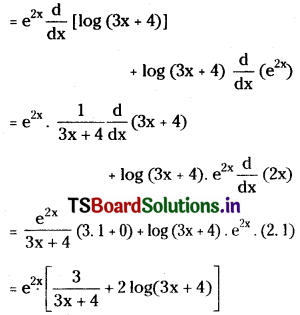
Question 5.
If y = \(\frac{\mathbf{a x}+\mathbf{b}}{\mathbf{c x}+\mathbf{d}}\) then find \(\frac{\mathbf{d y}}{\mathbf{d x}}\).
Solution:
Given, f(x) = \(\frac{\mathbf{a x}+\mathbf{b}}{\mathbf{c x}+\mathbf{d}}\)
Let y = \(\frac{\mathbf{a x}+\mathbf{b}}{\mathbf{c x}+\mathbf{d}}\)
Differentiating on both sides with respect to x
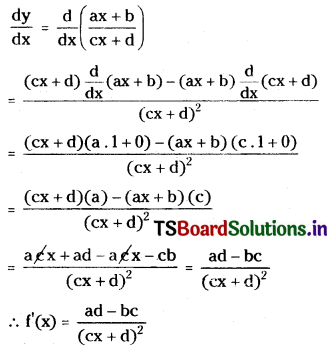
Question 6.
If f(x) = \(\mathbf{a}^{\mathbf{x}} \cdot \mathrm{e}^{\mathbf{x}^2}\), then find f'(x). [May ’08; B.P.]
Solution:
Given, f(x) = \(\mathbf{a}^{\mathbf{x}} \cdot \mathrm{e}^{\mathbf{x}^2}\)
Let y = \(\mathbf{a}^{\mathbf{x}} \cdot \mathrm{e}^{\mathbf{x}^2}\)
Differentiating on both sides with respect to x

![]()
Question 7.
If f(x) = log(sec x + tan x), find f'(x). [Mar. ’14; May ’11]
Solution:
Given, f(x) = log(sec x + tan x)
Differentiating on both sides with respect to x
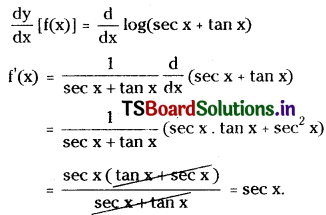
Question 8.
If f(x) = 1 + x + x2 + ……….. + x100, then find f'(1). [Mar. ’19 (TS); May ’14]
Solution:
Given f(x) = 1 + x + x2 + ……… + x100
Differentiating on both sides with respect to ‘x’.
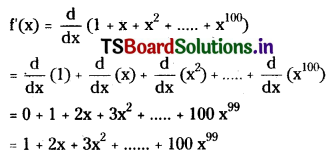
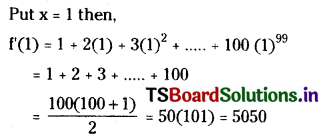
Question 9.
If y = \(\sin ^{-1} \sqrt{x}\), find \(\frac{d \mathbf{y}}{d x}\). [Mar. ’13]
Solution:
Given, y = \(\sin ^{-1} \sqrt{x}\)
Differentiating on both sides with respect to x
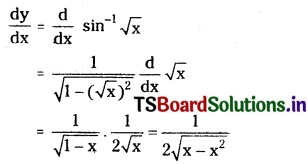
Question 10.
If y = sec(√tan x), find \(\frac{d \mathbf{y}}{d x}\). [May ’07]
Solution:
Given, y = sec(√tan x)
Differentiating on both sides with respect to x
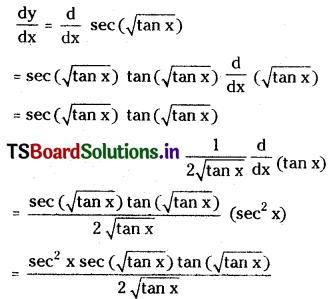
Question 11.
If y = log(cosh 2x), find \(\frac{d \mathbf{y}}{d x}\). [Mar. ’12]
Solution:
Given y = log(cosh 2x)
Differentiating on both sides with respect to x
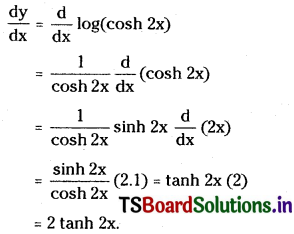
![]()
Question 12.
If y = log(sin(log x)), find \(\frac{\mathrm{dy}}{\mathrm{dx}}\).
Solution:
Given, y = log(sin(log x))
Differentiating on both sides with respect to ‘x’.
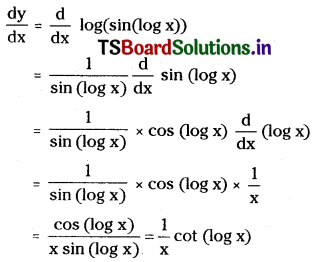
Question 13.
If y = \(\left(\cot ^{-1} x^3\right)^2\), find \(\frac{\mathrm{dy}}{\mathrm{dx}}\). [May ’13, ’09; Mar. ’18 (TS)]
Solution:
Given y = \(\left(\cot ^{-1} x^3\right)^2\)
Differentiating on both sides with respect to ‘x’.
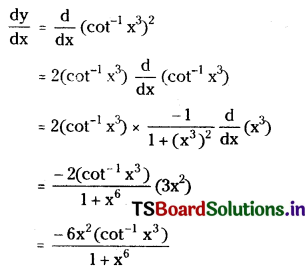
Question 14.
Find the derivative of log(tan 5x). [Mar. ’08]
Solution:
Given, y = log(tan 5x)
Differentiating on both sides with respect to ‘x’.
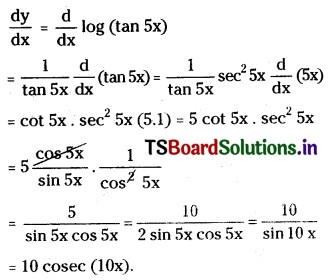
Question 15.
Find the derivative of \(\sinh ^{-1}\left(\frac{3 x}{4}\right)\). [May ’13 (Old)]
Solution:
Let y = \(\sinh ^{-1}\left(\frac{3 x}{4}\right)\)
Differentiating on both sides with respect to ‘x’.
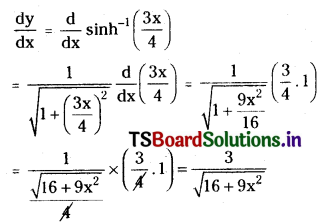
Question 16.
Find the derivative of \(\log \left(\frac{x^2+x+2}{x^2-x+2}\right)\). [May ’06]
Solution:
Let y = \(\log \left(\frac{x^2+x+2}{x^2-x+2}\right)\)
Differentiating on both sides with respect to ‘x’.
\(\frac{d y}{d x}=\frac{d}{d x} \log \left(\frac{x^2+x+2}{x^2-x+2}\right)\)
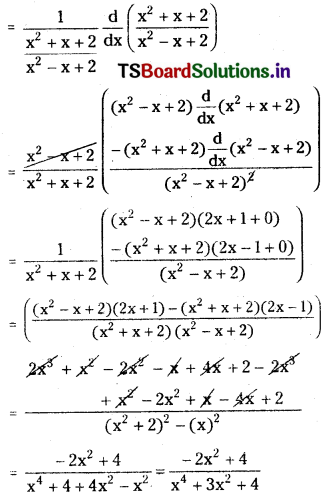
Question 17.
Find the derivative of \(\log \left[\sin ^{-1}\left(e^x\right)\right]\). [Mar. ’10]
Solution:
Let y = \(\log \left[\sin ^{-1}\left(e^x\right)\right]\)
Differentiating on both sides with respect to ‘x’.
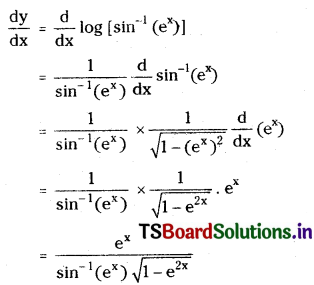
![]()
Question 18.
Find the derivation of x = tan(e-y) with respect to x. [Mar. ’17 (TS), ’05; May ’03]
Solution:
Given, x = tan(e-y)
⇒ tan-1x = e-y
Differentiating on both sides with respect to ‘x’.
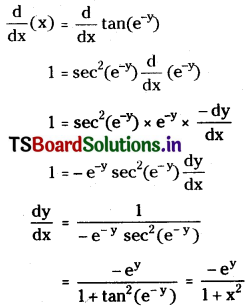
Question 19.
Find the derivative of cos[log(cot x)]. [Mar. ’13 (old)]
Solution:
Let y = cos[log(cot x)]
Differentiating on both sides with respect to ‘x’.
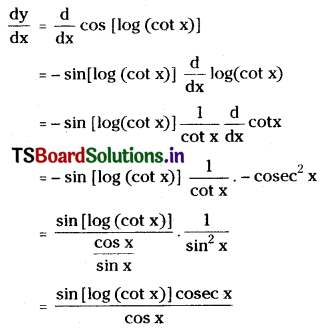
Question 20.
If y = \(\tan ^{-1}\left(\frac{2 x}{1-x^2}\right)\), then find \(\frac{\mathbf{d y}}{\mathbf{d x}}\). [Mar. ’15 (AP), ’04; May ’98, ’92]
Solution:
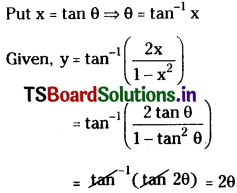
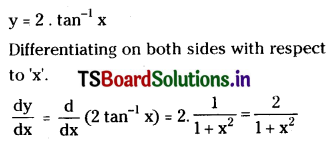
Question 21.
If y = xx (x > 0), find \(\frac{\mathbf{d y}}{\mathbf{d x}}\). [Mar. ’11; May ’97, ’96]
Solution:
Given, y = xx
Taking logarithms on both sides,
log y = log xx
log y = x log x
Differentiating on both sides with respect to ‘x’.
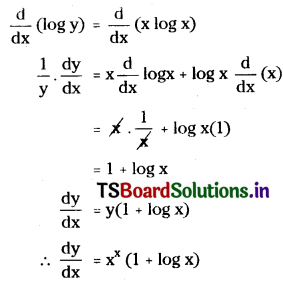
Question 22.
If x = a cos3t, y = a sin3t, find \(\frac{\mathbf{d y}}{\mathbf{d x}}\). [Mar. ’16 (AP), ’12, ’07, ’02; May ’12, ’11]
Solution:
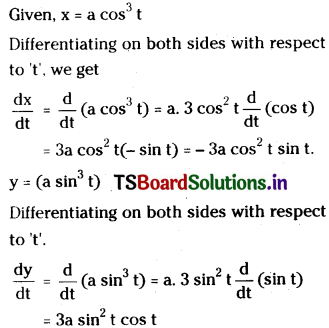
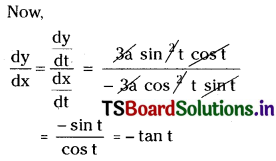
![]()
Question 23.
If x3 + y3 – 3axy = 0, find \(\frac{\mathbf{d y}}{\mathbf{d x}}\). [Mar. ’00]
Solution:
Given, x3 + y3 – 3axy = 0
Differentiating on both sides with respect to ‘x’.

Question 24.
Find the derivative of sin-1(3x – 4x3) with respect to ‘x’. [Mar. ’16 (TS), May ’11, ’97]
Solution:
Let y = sin-1(3x – 4x3)
Put x = sin θ
⇒ θ = sin-1x
Now, y = sin-1(3 sin θ – 4 sin3θ)
= sin-1(sin 3θ)
= 3θ
y = 3 sin-1x
Differentiating on both sides with respect to ‘x’.
\(\frac{\mathrm{dy}}{\mathrm{dx}}=3 \frac{\mathrm{d}}{\mathrm{dx}} \sin ^1 \mathrm{x}\)
= \(3 \frac{1}{\sqrt{1-x^2}}\)
= \(\frac{3}{\sqrt{1-x^2}}\)
Question 25.
Find the derivative of \(\sin ^{-1}\left(\frac{2 x}{1+x^2}\right)\). [May ’15 (TS); Mar. ’15 (TS), ’12, ’98]
Solution:
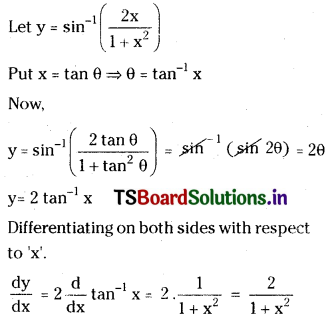
Question 26.
Find the derivative of \(\tan ^{-1} \sqrt{\frac{1-\cos x}{1+\cos x}}\). [May ’13 (old); May ’02]
Solution:
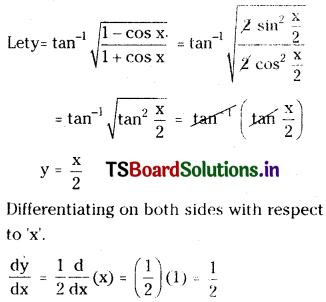
Question 27.
Find the derivative of \(\sec ^{-1}\left(\frac{1}{2 x^2-1}\right)\). [Mar. ’17 (AP), ’13]
Solution:
Let y = \(\sec ^{-1}\left(\frac{1}{2 x^2-1}\right)\)
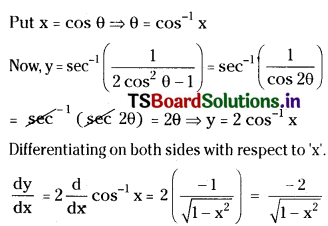
![]()
Question 28.
If x = 3 cos t – 2 cos3t, y = 3 sin t – 2 sin3t, then find \(\frac{\mathbf{d y}}{\mathbf{d x}}\).
Solution:
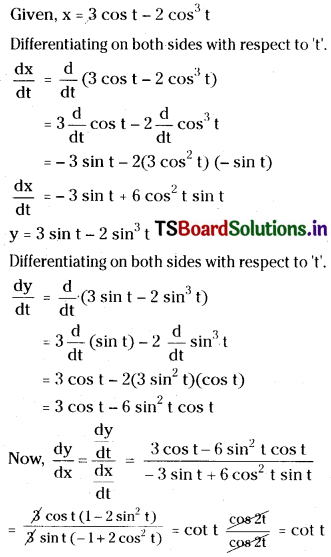
Question 29.
Find the derivative of y = xy. [Mar. ’04, ’00, ’99]
Solution:
Given, y = xy
Taking logarithms on both sides, we get
log y = log xy
⇒ log y = y log x
Differentiating on both sides with respect to ‘x’.
\(\frac{d}{d x}(\log y)=\frac{d}{d x}(y \log x)\)
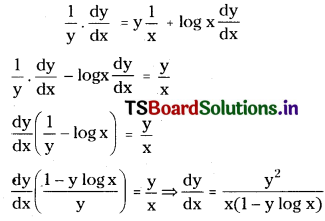
Question 30.
Find the derivative of ex with respect to √x. [Mar. ’03]
Solution:
Given, f(x) = ex, g(x) = √x
Let u = ex
Differentiating on both sides with respect to ‘x’.
\(\frac{d u}{d x}=\frac{d}{d x} e^x=e^x\)
Let v = √x
Differentiating on both sides with respect to ‘x’.

Question 31.
If y = \(\frac{2 x+3}{4 x+5}\), then find \(\frac{\mathbf{d y}}{\mathbf{d x}}\). [May ’15 (AP)]
Solution:
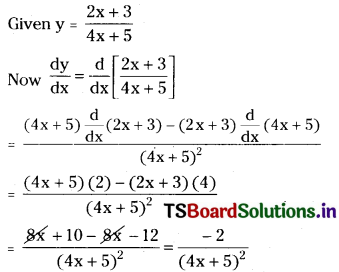
![]()
Question 32.
Find the derivative of y = \(\sqrt{2 x-3}+\sqrt{7-3 x}\). [Mar. ’15 (TS)]
Solution:
Given y = \(\sqrt{2 x-3}+\sqrt{7-3 x}\)
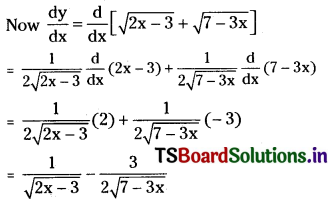
Question 33.
Find the derivative of 5 sin x + ex log x. [Mar. ’17 (AP)]
Solution:
Let y = 5 sin x + ex log x
Differentiating on both sides with respect to x
